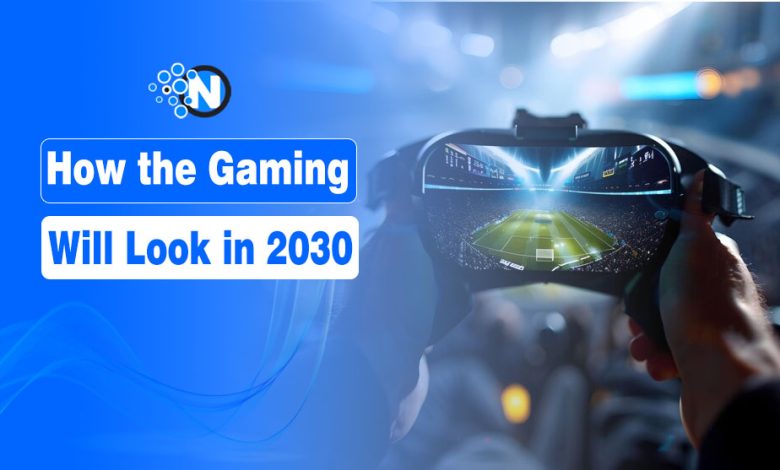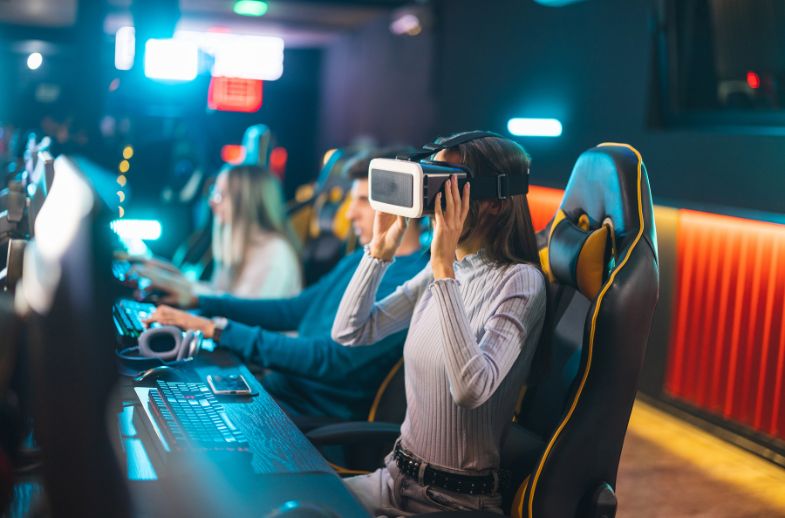How The World Of Gaming Will Look In 2030

Looking ahead to the future of gaming can be difficult, given the industry’s fast-moving nature and evolving technologies.
However, by analyzing current trends and looking at emerging technology, we can imagine some changes that might occur in the next few years.
Let’s discuss the latest trends in gaming and how the world of gaming will look in 2030 and beyond.
The Future of Gaming
Classic Themes Will Remain Popular While New Ones Emerge
What kinds of games will we probably be playing in 2030? This is the first big question that gamers will want to answer. Titles like Prince of Persia: The Lost Crown, Tekken 8, and Final Fantasy VII Rebirth are the most-played video games in 2024. We cannot overlook the fcat that these games are all a part of existing franchises that have been adored by gamers for years, even though they use advanced technology and provide novel concepts.
Indeed, many of the same themes from the earliest computer games of the second half of the 20th century may still be found in games today. Certain timeless themes will draw gamers in regardless of the genre—from sports simulations and puzzles to space adventures and shooters.
Of course, innovative new themes are bound to emerge, but we can also look forward to seeing new technology being used to enhance existing themes. This can be seen in the example of Tekken 8, where fluid new moves with changing properties add a new dimension to the fighting genre.
This enhancement of existing themes and the development of successful franchises should continue in the different gaming genres. Slots based on wild animals, fruits and trips to Las Vegas remain the most instantly recognizable, but we are also now seeing developers take inspiration from various current movies and TV shows, as well as music and sports to bring advanced graphics and features. Many of these can be found using this list dedicated to WV gaming sites, which provides a diverse range of options from the likes of FanDuel and DraftKings.
Virtual Reality And The Metaverse
In terms of technology, virtual reality (VR) and augmented reality (AR) have already started to make an impact in the gaming world. These technologies allow developers to merge different realities and create more immersive games.
The use of VR in gaming is growing, with this selection of the best VR games in 2024 including names like Thumper and Astro Bot Rescue Mission. The genre hasn’t taken off as much as expected, with the relatively high cost of the headsets posing a barrier to more widespread adoption.

Some analysts think that the metaverse is the future of gaming as it can fully immerse gamers in a new world. Mark Zuckerberg’s decision to change his company’s name to Meta and invest an estimated $46 billion in the metaverse has been controversial, as the company has lost huge money in the last couple of years. However, recent indicators show that it might prove wise; as more people recognize the potential advantages of the metaverse.
For the moment, there’s a feeling that the gaming industry has yet to fully embrace the metaverse. Decentraland and The Sandbox are among the top names, but they have yet to attract enough players to create a vibrant atmosphere. Meta and other companies are still working hard and investing heavily in the metaverse, but perhaps a blockbuster hit is needed to help this technology finally hit the mainstream.
Open Worlds And Procedural Generation
The idea of massive open worlds with unique characteristics hit the headlines with No Man’s Sky, which was released by Hello Games in 2018. It used procedural generation to create unique planets, each with its own ecosystems. Although this was eye-catching at first, overall reviews suggested that the gameplay failed to capture players’ imaginations in the long term.
This technology isn’t as newsworthy right now, but it’s being used in many games. Procedural generation provides a way of creating unique quests and rewards, which means that it has become a huge part of RPG games. It’s also typically used in space exploration games such as No Man’s Sky, which is still considered to have the largest open world in video games in history. Starfield by Bethesda refined this approach by using algorithmic generation that created more realistic planets. However, the repetitive nature of the planets was criticized in some reviews.
It seems certain that procedural generation will continue to be an important tool for developers as they look to create huge new worlds. Yet, it remains to be seen if it will be a high-profile approach that is used to market open-world games or simply another helping hand they can use to create aspects of games that players don’t really hear about. The way that No Man’s Sky and Starfield were criticized for this aspect means that it may become less talked about.
AI is Set To Add Value To Games
Artificial intelligence (AI) has been one of the highest-profile technologies in recent years. The ways it suddenly exploded into our lives helped make it an incredibly popular subject among gaming fans and in many other walks of life. From banking to art, medicine and more, AI is providing useful ways to advance in many ways.
In the gaming world, AI can power non-player characters to be more realistic and unpredictable. Developers can also use AI as part of their data mining exercises, such as for finding out which parts of their games are most popular.
Like some of the other areas we’ve looked at here, it seems that there is a lot more still to come. We can expect to see AI becoming a bigger part of games, perhaps ensuring that every player gets a completely unique experience in the same game, whether they are using a computer or one of the best new smartphones.
Final Thoughts
These examples show how the gaming world is likely to continue changing without losing the appeal that has made it such a big deal in the first place. Technologies like AI, VR, and Metaverse are the main players in the gaming industry, transforming how games are developed and played. Game developers are also incorporating the latest technologies in development procedures to deliver an immersive gaming experience.




